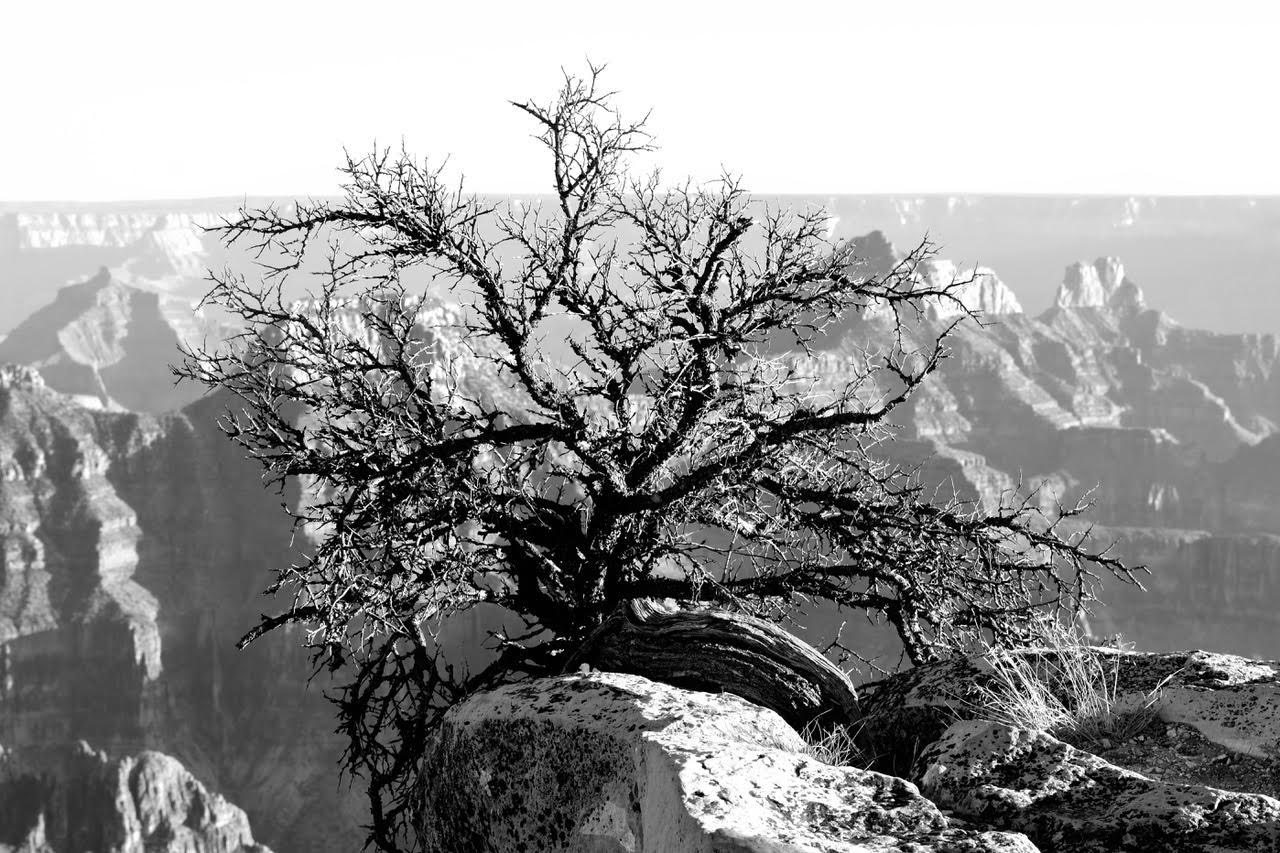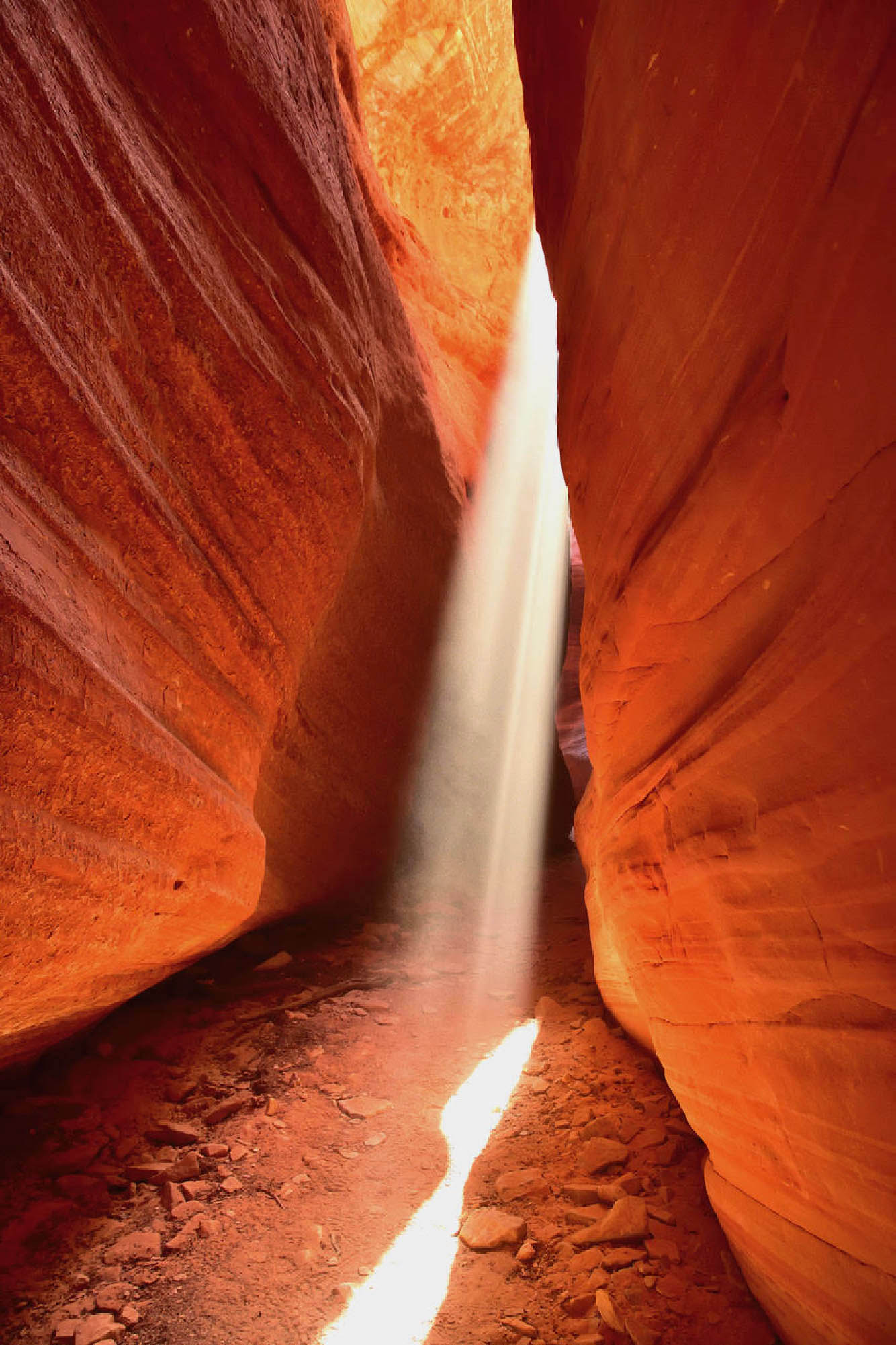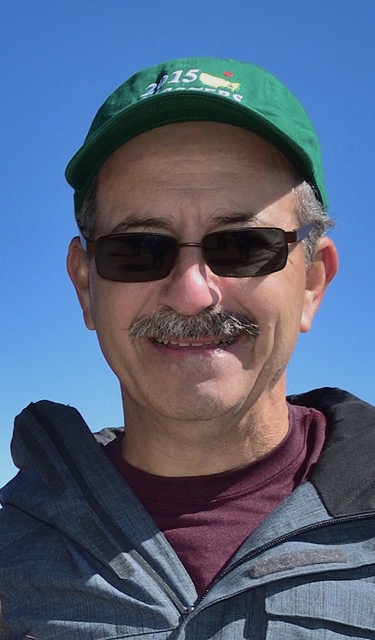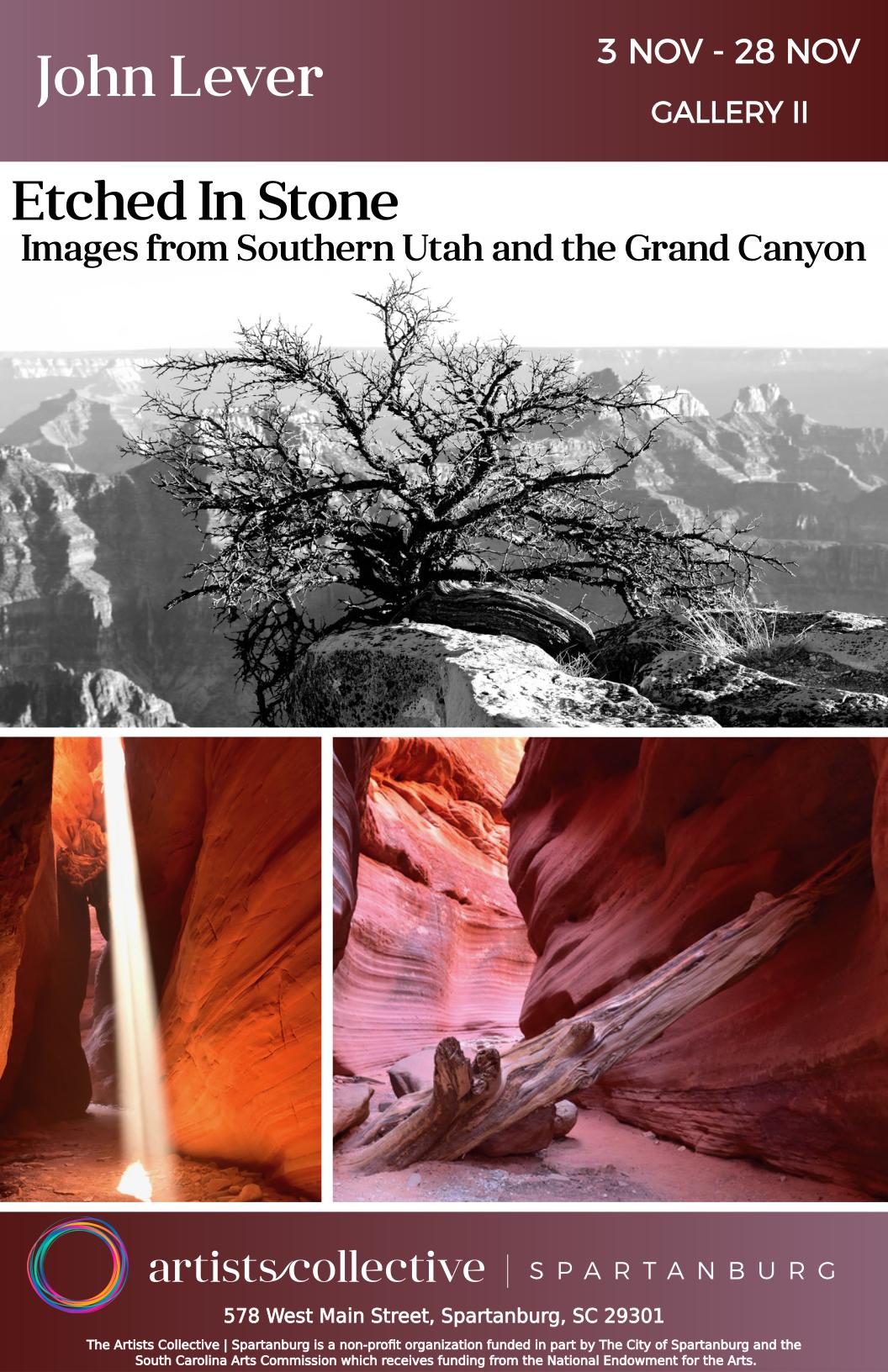
Spartanburg Photographer Exhibits Images of the American West
Spartanburg photographer John Lever will exhibit a striking collection of photography — Etched in Stone — at Artists Collective | Spartanburg in November, giving patrons extensive insight to the majestic landscapes of the American West.
The some-18 prints will be on free public display Nov. 3-28 at the Collective, located at 578 W. Main St. in Spartanburg. The gallery is open Tuesday through Saturday, 10 a.m. to 4 p.m. Guests are required to wear face masks and to physically distance themselves. Because of the pandemic, the gallery will not hold a reception, and it will not participate in the city’s monthly ArtWalk.
“This is an exhibition that was originally scheduled for the spring,” the Collective’s Management Board Chair Beth Regula said. “That was about the time the pandemic hit, and everything was either cancelled or delayed. I am so glad that we are able to now bring this wonderful photography to the viewing public. John has captured a sense of awe and wonder in his photos of the American West. The landscape out west is very different from what we are accustomed to here in the South. It’s almost otherworldly.”

“This exhibition shows some of the more striking places that left the deepest impressions on me during some travel in Southern Utah and Northern Arizona,” Lever said. “Several of the prints are from my visit to Peekaboo Canyon, near Kenab, UT. This is a not particularly well known slot canyon, but its beautiful red-colored sandstone has tremendous texture. This a challenging place to get to — you need a guide — but it’s worth it. The American West’s landscape is so unique and very different from the East — it really has a strong impact. In the East, one sees lots of green, but that’s a rare color in the subject region. One surprising aspect are the red shades. In South Carolina mud is red, but not the landscape. Many of the images here — taken in Zion, Bryce, North Rim Grand Canyon and Peekaboo Canyon — have strong red images. Visitors will also see my exploration of monochrome. This is really the first time I have printed in monochrome. I think it works well with the stark landscape and stark light in the west.”
It took Lever about six months to create this exhibition that is subtitled “Images from Southern Utah and the Grand Canyon.” It includes prints from 8 by 10 inches to large canvas prints. All of the work will be for sale, ranging from $70 to $200.

“This exhibit is, in some respects, a new direction for me,” Lever said. “I have mainly focussed on wildlife and landscapes in color. While there are examples of wildlife and landscapes here, the feel is different, the product of a harsher location. The heavy use of monochrome emphasizes the texture of this environment over the color. Even some of the color prints have a simple color palette. They almost mimic the monochrome examples. In addition, this is my first time making large prints — this time up to 24” x 36”. I think this size complements the subject matter. When people see these photos, I hope they get an appreciation for the beauty of the region, which I hope translates to support for conservation of the natural wonders of our country.”

Lever has been a member of the Collective since 2017. “Artists Collective | Spartanburg is the best place to be in the Spartanburg Art world — at least for me,” Lever said. “The members benefit from the collaboration of their fellow members.”
Lever is a native of South Florida, but now resides in Duncan, a small town in Spartanburg County. He holds a bachelor’s degree in chemistry from Tulane University and a doctorate in chemistry from the University of North Carolina. His wife, Lisa, is a retired chemistry professor from the University of South Carolina Upstate. They have two adult daughters, both of whom are pursuing advanced degrees in science.

